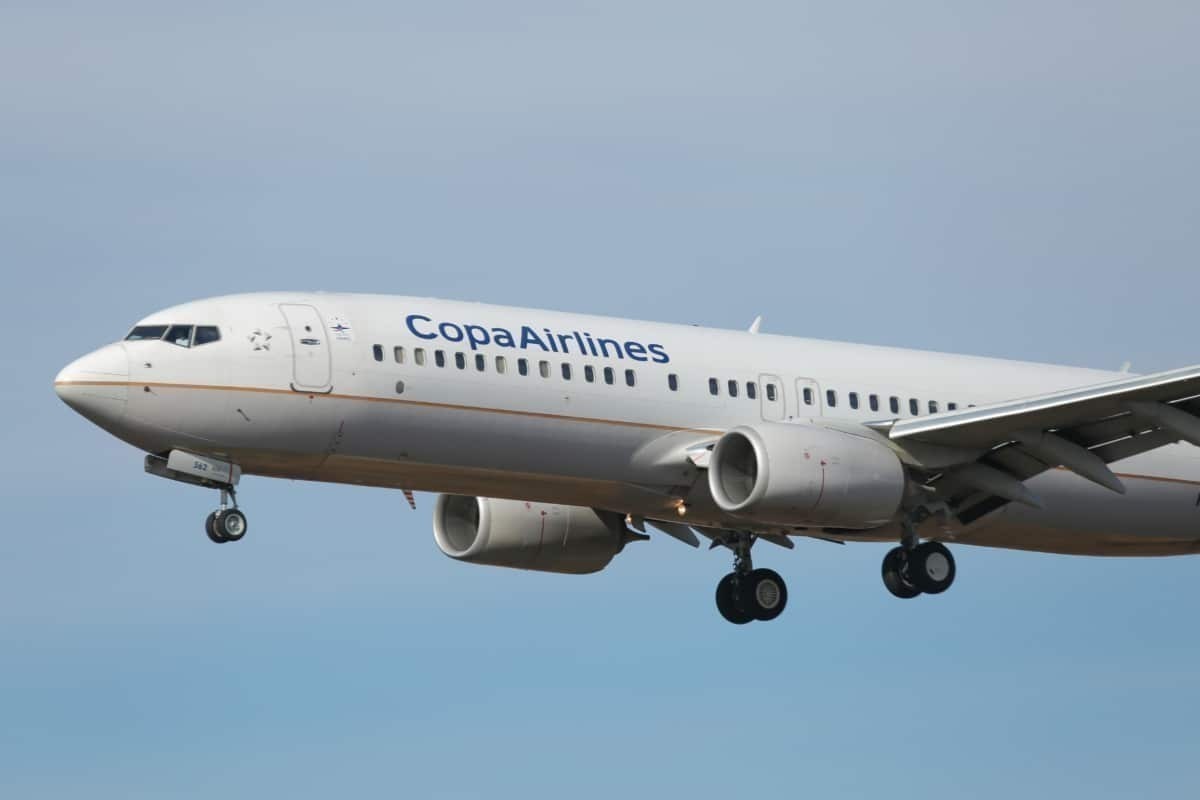Have you ever noticed that Copa Airlines’ livery is very similar to the colors and structure of United Airlines? It wasn’t always the case, as the Panamanian carrier’s foundation dates back to 1947 and originally had a red stripe across its planes. So, how did Copa came to have its current livery? Let’s investigate further.

The origins of Copa Airlines
Long before Copa Airlines became such a powerhouse in Central America and used Tocumen International Airport as the ‘Hub of the Americas,’ the carrier had humble origins. The now extinct Pan American World Airways had an original 32% stake in Copa.
Stay informed: Sign up for our daily aviation news digest.
The Panamanian carrier began its operations with three domestic routes, using Douglas DC-3/C47 planes. How times have changed: Currently, Copa only has one local flight between Panama City and David.
During those first years, Copa Airlines wasn’t the only carrier in Panama. Air Panamá Internacional was a key player in the country, backed up by the Panamanian Government and Iberia.
In 1966, the carrier set its first international destinations, with three weekly flights to San José, Costa Rica. Three years later, Copa Airlines launched more global destinations with its first AVRO 748. It flew to Kingston, Managua, and Barranquilla. By the 70s, it started to connect more Latin American cities, showing what was yet to come. It launched routes to Medellin, Cartagena, San Salvador, and Guatemala.

How did Copa become a superpower in Latin America?
Copa Airlines is not one of the oldest carriers in the region. Avianca, LAN, Aeromexico, and some others have earlier origins. Nevertheless, Copa is recognized as one of the most important airlines in Latin America. It flies to every country on the continent and uses Tocumen Airport as a connection hub.
In 1980, Copa withdrew from the domestic market and focused on its international reach. It did it by adding the first Boeing 737-100 to its fleet. As we now know, Copa is one of the most significant users of the B737 in the region. It plans to operate solely with this model in the future.
In the 80s, Copa flew to Port-au-Prince in Haiti, Santo Domingo (Dominican Republic), San Juan in Puerto Rico, and Miami.
Nevertheless, it was until 1992 when Copa moved to Tocumen International Airport and created the ‘Hub of the Americas.’ At that time, the airline had a livery composed of two stripes, red and yellow, across the aircraft. It had the word ‘Copa’ written on the tail and the fuselage.
Between 1992 and 1997, Copa launched operations to Caracas, Mexico City, Santiago, Cali, Bogotá, Quito, Guayaquil, Lima, Buenos Aires, and Havana. It was becoming the Copa we know today. Then, Continental Airlines came.

And what about the livery? Why is it so similar to United’s?
In 1998, Copa Airlines and Continental Airlines signed a strategic alliance. The US carrier acquired 49% of Copa, increasing it to 51% the next year.
After that, Copa launched its new brand and adopted the OnePass frequent flyer program. It also upgraded its fleet with Boeing 737 NG planes. Then, the carrier changed its livery and took the white fuselage with the company’s name written across. It painted its tail with a dark blue and the world with gold and white stripes across. It created the image we know today.
In the 2000s, Copa launched flights to Cancun, Sao Paulo, Tegucigalpa, Orlando, Los Angeles, and New York. By 2005, it became the third Latin American Airline to trade on the New York Stock Exchange. That same year, Continental reduced its stake to 27.3%, and by 2006 it had a 10% stake.
As we know, United and Continental merged in 2010 into one company. Eventually, Copa Airlines bought back the stakes it sold in 1998 but retained the look.
As of July 2020, Copa Airlines is in the Star Alliance, serves 78 international destinations in 33 countries. Nevertheless, it is currently grounded and might start operations in September.
Have you ever flown with Copa Airlines? Let us know in the comments.



